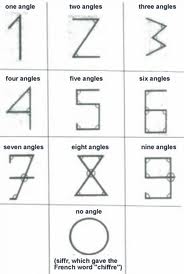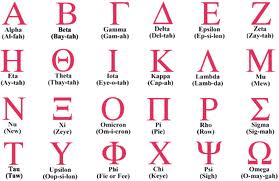Indefinite Articles
Recently a friend asked me about indefinite articles in English. You know, “a” and “an.” The rule is to use “an” before vowel sounds, “a” before consonant sounds. Why the “n”? We hear illiterates say “a apple” all the time, even though we never hear anyone say “an fish.”
First, a little background.
In Greek, they have a thing called thematic vowels. They don’t mean anything; their sole purpose is to make words easier to pronounce. Greek has a lot of inflections (word endings put there for grammatical reasons) and sometimes (to the Greeks, anyway), the beginning of that inflection didn’t sit right with the end of the root word, so they slipped in a vowel to smooth over the transition. For example, the root lu- (related to our word “loose”) could have an inflection that means a certain type of first person singular (-mai). Well, they didn’t like to say “lumai,” so they said “luomai.” (Yes, Greek scholars, I’m oversimplifying.) If you think the Greeks had it bad, Sanskrit was worse. They had this sort of thing between every pair of words, called “sandhi,” meaning “a putting together.” (This, I am told, is the origin of the word for the ice cream treat “sundae.” —a putting together of sauce and ice cream.)
That’s pretty far afield from English. All you need to get out of all that is that we can put in letters to make things easier to pronounce. Two more digressions:
- The word comes from the German word for “one,” “ein.” So the “an” form came first.
- Some words that started with “n” transferred that initial letter to the article! “Uncle” used to be “nuncle.” This is called juncture loss, by the way.
So there you have it. The only reason for the two forms is to make English sound better. Be thankful that’s the only rule for the indefinite article in English. Here’s a chart for the same thing in German:

Don’t even get me started on “the”!
PS. I just ran into this Rabbits Against Magic comic. I think he meant to write “an” instead of “and.”
Subscribe to this blog's RSS feed
Counting with letters
The numerals we use were popularized in Europe by Leonardo Fibonacci. We have some evidence (in the form of a date on a sign on a coal mine or something mundane like that) that our numerals were known in Europe before 1202, but Fibonacci generally gets the credit for popularizing them. Here’s a cleaned-up chart of the originals:
Before that, we had Roman Numerals, of course, but what did we use to count with before the Romans? We used letters.
Before I tell you how that works, I must mention numerology. Numerology is the practice of assigning numerical values to letters, counting up the sum, and looking for interesting patterns in the numbers you get. The most common way nowadays it to assign the values 1 through 26 to the letters of the English alphabet. Numerologists manipulate results pretty much at will; consequently you can prove anything you like with numerology if you work at it. It’s a bunch of hokum. I even figured out how to prove that I, your humble curmudgeon, am the antichrist! Ask me how and I’ll tell you. It’s all very clear, and completely bogus.
Since at least the Greeks and the Hebrews actually did use letters (other groups had a pile of other systems), you can assign a numerical value to a word. When the Greeks were actually counting, they put a mark at the corner of the letter to show that it was being used as a numeral. But they didn’t go from 1 to 26 (okay, 24) in assigning the values. First, here’s a Greek alphabet.
Numbers, like musical terms and place names, tends to be conservative linguistically, and that leads to a monkey wrench. Between epsilon and zeta, when you’re counting, you have to insert an obsolete letter called a digamma. The digamma looks like a capital F, and it stands for six. Keep counting, and you get to iota standing for ten. Kappa is 20, not eleven. Lambda is 30, and so on, until you get to the next monkey wrench between pi and rho. In goes another obsolete letter, qof, which looks like a lollipop, and it stands for 90. Hence, rho is 100. Sigma is 200, and so on. I don’t know of a letter for 900, and they used a word for a thousand, related to our word myriad. So if you want to say you have 23 sheep, you would use kappa gamma with a mark after the two letters.
Obviously, with a system like this you can assign values to actual Greek words pretty easily. Look up the numerical values and add them up. It’s from this practice that we get the expression “the number of a name.”
And having used that expression, I have to bring up the book of Revelation and the number of the beast. What I described above is how you get to the infamous 666. You have a few problems figuring out who he is, though.
- It’s easy to get from a word to a number, but hard to get from a number to a word. Try it.
- What language do you use? Classical Greek? Modern Greek? Hebrew? Latin? Aramaic? Italian? King James English? Whatever language the beast speaks?
- What name do you use? First name? Title? Whole name? Last name? Maybe his secret name. How about nickname? Or the name his opponents call him?
Obviously it’s going to be hard to figure out who the guy is in advance, and plenty of people have figured out plenty of ways to assign 666 to a lot of famous folks enemies. My recommendation: make it into a party game. Use something like the Greek method on the English alphabet, and assign people their numbers accordingly. Make up some rules, such as the higher your number the more intelligent (or some other desirable characteristic) you are. Perhaps the closer your numbers are, the more compatible, and you can add the number of your pet’s name to bring your numbers closer together. Married people who have the same last name would be very compatible.
The sky’s the limit.
Getting verbs right part 2
First, a little linguistics lesson. If you want, you can skip to the last two paragraphs.
Hebrew doesn’t have tenses the way English does. Hebrew has aspect. Aspect has to do with whether what the verb describes is over with or not. The perfective aspect translates pretty easily into our simple past (He ran). After all, if an action is over with, it’s in the past, right? And the imperfective aspect goes pretty well with our present progressive (He is running). (Greek has a past tense called the aorist that has this perfective aspect, equivalent to our simple past; and an imperfective past tense equivalent to our past progressive, “He was running.”) Here are a few examples:
Hebrew: katal—English: he killed. Hebrew: okal (pronounced okayl)—English: he is eating. Hebrew doesn’t have a way to say “he eats.” (As far as I know, but we translate it that way a lot.)
We have aspect in English, too but we don’t usually call it that—partly, I suppose, because we have some verb forms that don’t quite fit. Some of our verb forms do, though. Our simple past fits into the perfective aspect, too. And the progressive tenses are all imperfective regardless of when they happen. I am running and I was running are both imperfective.
All that to introduce today’s lesson, how to use the past perfect and present perfect tenses, which show both aspects!
The last two paragraphs:
1. The past perfect says that something was done and then ended in the past.
He had entertained thoughts of being the winner until he saw the score.
The trick to using the past perfect is you need to make some indication of when the deed ended, not just when it happened. In this case, it’s the phrase “until he saw the score.” Here’s the rule: if you don’t state or clearly imply when the deed ended, use the simple past. For example, “Yesterday he entertained thoughts of winning.” You’re saying when he did it, but not when he stopped. Simple past. Let’s turn the rule around: If you use the past perfect, indicate when the deed ended.
2. The present perfect means that something began in the past and continues until now.
He has entertained thoughts of winning ever since he began training. Also: Ever since he began training, he has entertained thoughts of winning.
The trick with the present perfect is that you need to indicate when the deed started. In this case, it’s the phrase “ever since he started training.” If you don’t give an indication of when it started, consider rewriting your sentence.
I won’t get into the perfect progressive tenses, which emphasize the imperfective aspect even more. (“He has been entertaining” and “He had been entertaining,” if you’re curious.)
And we’ll save the future perfect for a future post.




